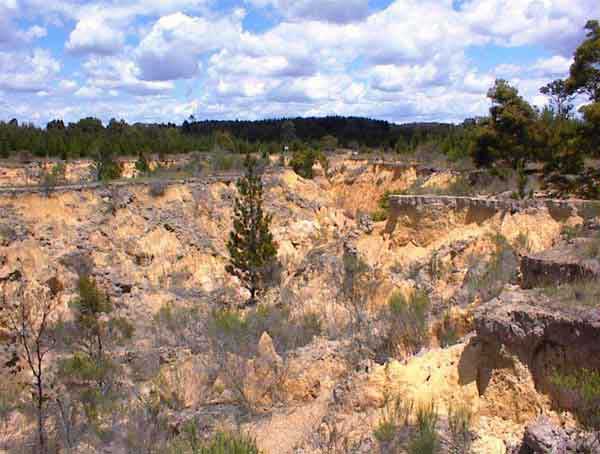Gully Erosion
A gully is a narrow channel eroded into a hill-slope when surface water flow increases in response to clearing and overuse of the land. Other factors that play a role in gully initiation are the type of land use, geology, rainfall, soil texture, slope, hill-slope length and seasonal climatic extremes [1]. Gully erosion is a major land degradation process. Erosion from gullies and streambanks removes valuable soil and can generate as much as 90% of the sediment yield from a catchment [1,2]. The sediment is a major source of turbidity and particulate nutrients in some rivers and coastal waterways [1].

Photo 1. Inverary Gully (a.k.a The Gully From Hell) in Bungonia, NSW, is an extreme example of gully erosion, in this case exacerbated by highly dispersible soils. (photo courtesy of Upper Shoalhaven Landcare Council)
- Hughes, A.O., Prosser, I.P., Stevenson, J., Scott, A., Lu, H., Gallant, J., and C. Moran. 2001. Gully erosion mapping for the National Land and Water Resources Audit. CSIRO Land and Water Canberra, Technical Report 26/01.
- Olley, J.M., Murray, A.S.. Mackenzie, D.M., Edwards, K. 1983. Identifying sediment sources in a gullied catchment using natural and anthropgenic radioactivity. Water Resources Research 29, 1037-1043.


